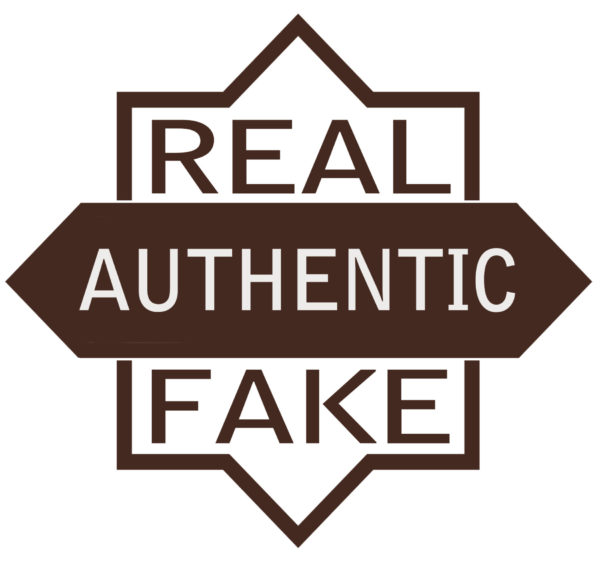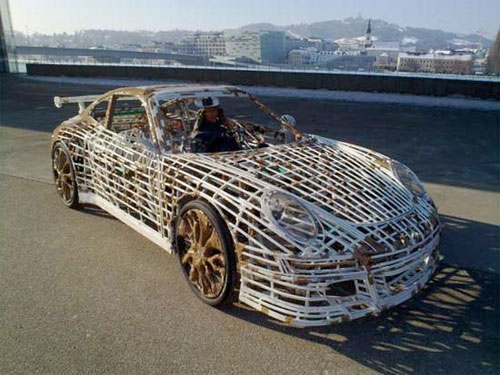REAL FAKE
Fake or Authentic? How many times did you ask yourself this question, when in doubt about a person, a product, a moment or a statement? The topic is way too vast and rich to be discussed exhaustively in just one page. In our case study we just wanted to offer a few hints for reflection, in order to rehabilitate the idea of Fake. If you look at Mother Nature, for instance, you discover she is a master of deceit. She shows things by hiding them, she camouflages and mimicks, mirroring herself in countless forms. Compare the Coral Snake and its deadly poison with the Scarlet King, which is not poisonous at all, but is almost identical. It’s so easy to mistake one snake for another that somebody came up with a proverb: “red and yellow kill a fellow, red and black venom lack,” (we reckon you need a blood colder than a reptile to remember the rhyme when you mostly need it.). Another striking animal is the dead leaf butterfly, which is a double-fake since she’s not dead, and even less, a leaf. This evolutionary gimmick simply helped her to survive throughout time, effectively cheating on dumb predators. Deceit has million tricks, all of them based on perception.
 A lively Dead Leaf Butterfly (courtesy conservationreport.com)
A lively Dead Leaf Butterfly (courtesy conservationreport.com)
But what happens when the notion of Real and Fake involve human beings? If you type the word fake on Google images, you’ll find an infinte array of pictures: from fake tits to fake scoops, there’s virtually everything: fake documents, fake cars, fake bombs, fake poop, even fake money for buying fake Gucci purses.
At first, deceit can be seen as the main pillar of a rotten civilization but, at a closer look, you realize it’s a biological shortcut, a trick that saves you the effort “to be” in favor of “to seem”. Life itself is a gigantic distorted lens, a fantastic make-believe that, in the end, makes existence more funny, surreal and bearable for all of us. Padded panties are an almost touching example of reality bent to personal benefit, a bait to lure (and fool) the prey. The advantages of fakeness, in any case, outnumber the drawbacks in many aspects. Not last for the fact human beings love to be tricked.
 What an ass! (is the expression referring to the girl, or the guy looking at her?)
What an ass! (is the expression referring to the girl, or the guy looking at her?)
Authenticity, as you see, has its raison d’etre as long as falsehood is there to prove it through counter-evidence. What’s in fact the value of an authentic piece, if there isn’t a fake one which worship it by imitation? You can own a fake Ferrari, for instance. It can be yours for 30,000 dollars, if you are happy to drive the lousy version of the real thing and, most of all, accept fooling yourself before fooling your friends. This act, in any case, will give immense satisfaction to every owner of a real Ferrari. It will make them feel privileged and unreachable. Even Ferrari will be happy, because fakes indirectly reinforce the brand’s totemic power (honestly, have you ever heard of a fake Nissan?)
Above and below: Fake Ferrari cars, reachable for the unrich (photo: courtesy motortrend.com). Human beings, according to anropologist Chris Law, follow Nature’s Law. Fake Ferrari cars are the cultural equivalent of enhanced self representation among animals, while competing against each other for the mating season. A luxury red car, he claims, is a hybrid symbol that melts sexual power, money and success on a piece of metal.
In spite of all this, we all know big brands spend billions to fight illegal imitations and lousy copies, mostly made in China and Taiwan. But why nobody ever thought of defending the rights of the poorer? What’s wrong with fakes, when we all know some brands produce both, the authentic and the false, only to get a wider slice of the market?
To solve this problem, and help the less fortunate folks that roam the planet, the Brandpowder Team came up with an idea: to protect the authenticity of the “Real Fake”. We are not talking here of giving crime an incentive, of course. We just want to certify the dignity of fakeness.
Above: the R(A)F logo, i.e. the “Real (Authentic) Fake” stamp which guarantees the product you are buying – besides being an exquisite by-product of consumerism and advertising’s fake mythology – is genuinely false. You can download it here for free and proudly apply it to all of your really fake belongings. Jim Peary, one of our staff, tattoed it on his chest, saying his sentiments were not really true but kind of R(A)F.
Below: construction of a fake Porsche (courtesy of the author). Artist and designer Hannes Langeder built a pedal-powerded model which has been dubbed as the slowest (and cleanest) Porsche ever. The Brandpowder Team wanted to give a place of honor to this real fake piece of art.











2 Comments
Join the discussion and tell us your opinion.
Great post! We love it!
Thank you for your comment.
The Brandpowder Team